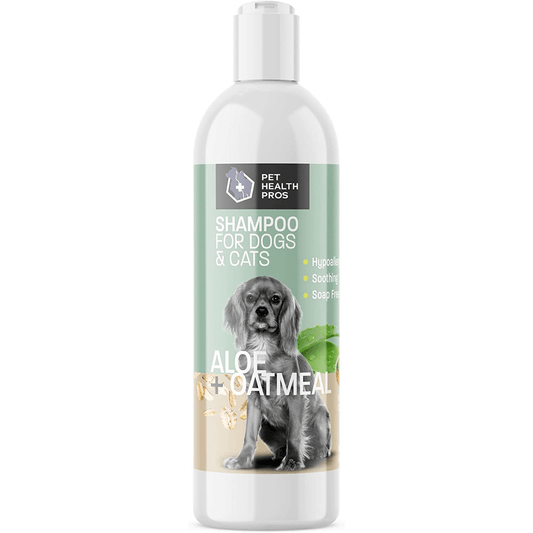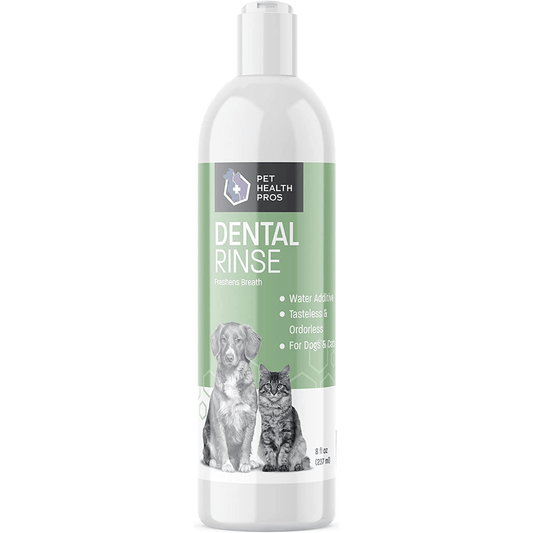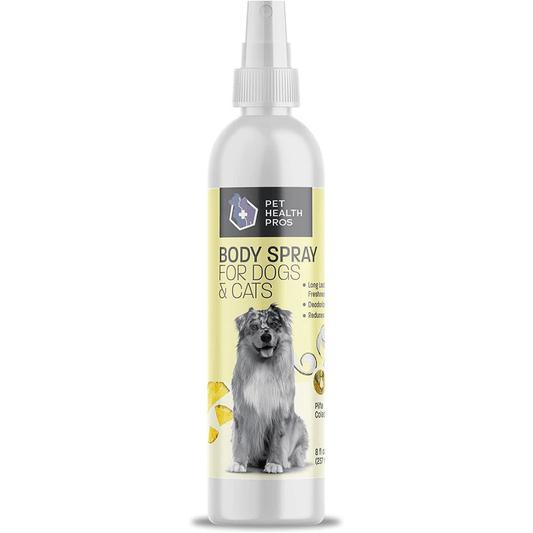If you're a dog owner, you know how frustrating it can be when your furry friend decides that your furniture is their personal chew toy. Not only can this lead to costly damage, but it can also be a sign of deeper behavioral issues. Luckily, there are sprays designed to help deter dogs from chewing on furniture, allowing you to protect your home while keeping your pet happy. In this article, we'll explore everything you need to know about using a spray to keep dogs from chewing furniture, from understanding their behavior to applying the right products effectively.
Key Takeaways
- Understand why dogs chew furniture, including boredom and anxiety.
- Choose the right spray, considering both natural and chemical options.
- Apply the spray correctly for maximum effectiveness.
- Combine spray use with training techniques to redirect chewing.
- Create a dog-friendly environment with appropriate toys and supervision.
Understanding Dog Chewing Behavior
It's super frustrating when your dog starts gnawing on your favorite furniture. But before you get too mad, it helps to understand why they're doing it. It's usually not out of spite! There are several reasons behind this behavior, and figuring out the cause is the first step to stopping it.
Reasons Dogs Chew Furniture
So, why do dogs chew furniture? Well, puppies often chew because they're teething. It's just like when babies teethe – their gums are sore, and chewing provides relief. Adult dogs might chew for different reasons, like boredom or anxiety. Sometimes, it's simply because they like the texture of certain materials. Think about it: that wooden table leg might feel pretty good on their teeth!
Here's a quick rundown of common reasons:
- Teething (puppies)
- Boredom
- Anxiety
- Habit
- Nutritional deficiencies (rare, but possible)
The Impact of Boredom
Boredom is a big one. If your dog isn't getting enough exercise or mental stimulation, they might turn to chewing as a way to entertain themselves. Imagine being stuck inside all day with nothing to do! Chewing can be a way for them to release pent-up energy. Make sure your dog has plenty of dog chew toys and gets enough playtime. A tired dog is often a good dog.
Separation Anxiety and Chewing
Separation anxiety can also lead to destructive chewing. Some dogs get really stressed when they're left alone, and chewing becomes a coping mechanism. It's like they're trying to soothe themselves. If you suspect your dog has separation anxiety, look for other signs like excessive barking, pacing, or accidents in the house when you're gone. It might be worth talking to your vet or a professional trainer to get some help. They can suggest strategies to ease your dog's anxiety and reduce the chewing. It's all about making them feel safe and secure when they're by themselves.
Choosing the Right Spray to Keep Dogs from Chewing Furniture
So, you're ready to pick a spray to save your furniture? Great! There are a few things to think about before you grab the first bottle you see. It's not just about finding something that smells bad to your dog; it's about safety, effectiveness, and what's actually in the spray.
Types of Anti-Chew Sprays
Okay, first things first: there's more than one kind of spray out there. You've got your bitter sprays, which are probably the most common. These use a taste that dogs really don't like to deter them. Then, there are sprays that use scent as a deterrent. Some sprays combine both taste and scent to really drive the message home. It's worth trying a couple to see what your dog responds to best. What works for one dog might not work for another, so a little trial and error is normal.
Natural vs. Chemical Ingredients
This is a big one. Do you want something made with natural stuff, or are you okay with chemicals? Natural sprays often use things like apple cider vinegar, lemon, or other plant-based ingredients. They're generally considered safer, but they might not be as strong or last as long. Chemical sprays, on the other hand, can be more effective but might have ingredients you're not super comfortable with. Always read the label carefully, no matter what you choose.
Safety Considerations for Pets
Above all else, you need to make sure the spray is safe for your dog. Here's what to keep in mind:
- Check the label: Make sure the spray is specifically made for dogs and safe for use on furniture.
- Avoid toxic ingredients: Steer clear of anything with alcohol, strong chemicals, or ingredients you can't pronounce.
- Test it first: Before spraying all over your couch, test a small, hidden area to make sure it doesn't stain or damage the fabric. Also, spray a little on a cloth and let your dog sniff it to see if they have any adverse reactions.
It's also a good idea to check with your vet, especially if your dog has allergies or sensitivities. They can give you personalized advice on what sprays are safest for your furry friend.
How to Apply the Spray Effectively
Alright, so you've got your anti-chew spray. Now what? Just spraying it willy-nilly isn't going to cut it. You need a plan, a strategy, a method to your madness. Think of it like painting – prep work is key. Let's get into the nitty-gritty of how to actually use this stuff so your furniture survives.
Preparation of the Area
Before you even think about picking up the spray bottle, take a good look at what you're about to treat. Is it dusty? Dirty? Covered in dog hair? Give it a good cleaning first. Wipe down the surfaces with a damp cloth and let them dry completely. This helps the spray adhere better and actually do its job. Plus, you don't want to trap any grime under the spray, because that's just gross. Also, move anything that you don't want to get sprayed, like rugs or decorative items. Trust me, overspray happens.
Application Techniques
Okay, now for the fun part. Hold the spray bottle about 6-8 inches away from the furniture. You want a nice, even coat, but not so much that it's dripping. A light mist is usually enough. Pay special attention to areas where your dog likes to chew the most – corners, legs, edges. If it's your first time using the spray, test it on a small, inconspicuous area first to make sure it doesn't stain or discolor the fabric. Nobody wants a ruined couch. And for goodness' sake, don't spray it directly in your dog's face. That's just mean.
Frequency of Application
This isn't a one-and-done deal. You'll need to reapply the spray regularly, especially at first. How often? Well, that depends on the product and your dog's chewing habits. Check the label for the manufacturer's recommendations. Generally, you'll want to reapply every few days or after you clean the furniture. And definitely reapply after your dog has been particularly interested in chewing. Think of it as a maintenance thing. Here's a general guideline:
- Initial Phase (First 1-2 weeks): Apply every 1-2 days.
- Maintenance Phase (After initial success): Apply every 3-7 days.
- As Needed: Reapply after cleaning or if dog shows renewed interest.
Remember, consistency is key. If you slack off, your dog might just go back to their old habits. And nobody wants that.
Complementary Training Techniques
So, you've got your anti-chew spray, but that's not the whole story. Think of it as one tool in a bigger toolbox. Training is super important to really get your dog to stop gnawing on your stuff. It's like teaching them a new language – they need to understand what's okay and what's not.
Positive Reinforcement Strategies
Positive reinforcement is all about rewarding good behavior. When your dog chooses a chew toy instead of your table leg, throw a party! Okay, maybe not a party, but definitely some praise, a treat, or a favorite toy. The idea is to make the right choice super appealing. It's way more effective than yelling when they mess up.
- Use high-value treats that your dog loves.
- Keep training sessions short and fun.
- Be consistent with your rewards.
Redirecting Chewing Behavior
Ever catch your dog eyeing your favorite chair? That's your cue to step in. Redirect their attention to something they are allowed to chew on. A simple "No" followed by offering a chew toy can work wonders. It's like saying, "Hey, not that, but how about this instead?"
Think of redirection as a gentle nudge in the right direction. It's not about punishing the bad behavior, but guiding them towards a better choice.
Establishing Boundaries
Dogs thrive on routine and clear rules. Make sure they know what areas are off-limits. This might mean using baby gates, closing doors, or simply being consistent with where they're allowed to be. It's all about setting them up for success. If they can't get to the furniture, they can't chew it, right?
- Use consistent verbal cues like "Off" or "Leave it."
- Make off-limits areas less appealing (e.g., cover furniture).
- Reward them for staying out of those areas.
Maintaining a Chew-Free Environment
So, you've sprayed, you've trained, now what? It's all about keeping up the good work and making sure your dog has a space where they feel happy and don't feel the need to gnaw on your stuff. It's not a one-time fix, but a lifestyle change for both you and your furry friend.
Creating a Dog-Friendly Space
Think about it from your dog's point of view. Is there a comfy spot just for them? A place where they feel safe and relaxed? Having a designated area can seriously cut down on destructive chewing. Make sure their space has:
- A comfortable bed or blanket.
- Easy access to water.
- A selection of their favorite toys.
By making their area super appealing, you're giving them a positive place to hang out, which means they're less likely to wander off and find trouble (like your antique chair leg).
Providing Appropriate Chew Toys
Okay, this is a big one. Chew toys are not all created equal. You need to find what your dog loves and make sure they always have access to it. Consider these points:
- Rotate toys regularly to keep things interesting.
- Choose toys that are the right size and durability for your dog's breed and chewing style.
- Avoid toys that can be easily broken into small pieces, as these can be a choking hazard.
Regular Supervision and Interaction
This doesn't mean you have to watch your dog 24/7, but being present and engaged can make a huge difference. A bored dog is a destructive dog. Here's how to keep them occupied:
- Daily walks and playtime.
- Training sessions to keep their mind active.
- Interactive games like fetch or tug-of-war.
By giving your dog plenty of attention and opportunities to burn energy, you're helping them stay happy and less likely to turn to your furniture for entertainment.
Common Mistakes to Avoid
Overusing the Spray
So, you've got this spray, and you're thinking, "The more, the better, right?" Wrong! Overdoing it is a common mistake. Drenching your furniture won't necessarily deter your dog more effectively and can actually cause damage to the material. Plus, your house will just smell strongly of whatever you're spraying. It's all about finding the right balance. Think of it like seasoning food – too much, and it ruins the whole dish. Moderation is key here.
Neglecting Other Solutions
Okay, so you've got the spray, but that's it? You're not doing anything else? Big mistake! Relying solely on the spray is like trying to fix a leaky faucet with just a band-aid. It might help a little, but it's not a long-term fix. You need to think about the bigger picture. Is your dog bored? Do they have enough toys? Are they getting enough exercise? The spray is just one tool in your toolbox. You need to use it in combination with other strategies to really solve the problem. Here's a few things to consider:
- More exercise
- More toys
- Training sessions
Ignoring Behavioral Signs
Your dog is trying to tell you something! Are they chewing when you leave? Maybe it's separation anxiety. Are they only chewing one specific piece of furniture? Maybe it's a texture thing. Ignoring these signs is like ignoring the check engine light in your car – it's only going to get worse. Pay attention to when and why your dog is chewing. This will help you figure out the root cause of the problem and address it more effectively.
Understanding your dog's behavior is half the battle. If you see a pattern, try to figure out what's triggering it. Is it boredom, anxiety, or something else? Once you know the cause, you can start to address it directly.
Monitoring Your Dog's Response
So, you've started using an anti-chew spray. Now what? It's super important to keep a close eye on how your dog reacts. Not all dogs respond the same way, and what works for one might not work for another. Plus, you want to make sure the spray isn't causing any adverse reactions.
Signs of Effectiveness
How do you know if the spray is actually doing its job? Here are a few things to look for:
- Reduced chewing: This is the most obvious sign. Are they leaving the furniture alone more often?
- Change in behavior: Do they approach the sprayed furniture, sniff, and then back away?
- Less interest: Are they generally less interested in chewing on things they shouldn't?
If you're seeing these signs, great! The spray is likely working. But don't get complacent. Consistency is key.
Adjusting Your Approach
Sometimes, the initial approach needs tweaking. Maybe the spray isn't strong enough, or perhaps your dog is particularly stubborn. Here are some adjustments you might consider:
- Increase frequency: Try applying the spray more often, especially at first.
- Stronger formula: If you're using a mild spray, consider switching to a stronger one (but always prioritize safety!).
- Combine methods: Use the spray in conjunction with other training techniques, like redirection and positive reinforcement.
It's also a good idea to rotate between a couple of different sprays. Dogs can sometimes get used to a particular taste or smell, rendering the spray less effective over time.
When to Consult a Professional
If you've tried everything and your dog is still chewing, it might be time to bring in the big guns. A professional dog trainer or behaviorist can help you identify the underlying cause of the chewing and develop a tailored plan to address it.
Consider seeking professional help if:
- The chewing is severe and destructive.
- You suspect separation anxiety or another behavioral issue.
- You're feeling overwhelmed and unsure of what to do next.
Don't feel bad about asking for help. Sometimes, a fresh perspective is all you need to get things back on track.
Keeping an eye on how your dog reacts to different situations is really important. Watch for changes in their behavior, like if they seem more anxious or excited than usual. If you notice anything unusual, don’t hesitate to reach out for help. For more tips on understanding your dog's behavior, visit our website today!
Final Thoughts on Protecting Your Furniture
In conclusion, using a spray to deter your dog from chewing on furniture can be a game changer for your home. It’s not just about saving your couch or chair; it’s about teaching your dog what’s off-limits. Remember, consistency is key. Apply the spray regularly and combine it with positive reinforcement when your dog chooses their toys instead. Over time, your furry friend will learn to avoid the furniture, and you’ll both be happier. So, take action today and protect your home from those pesky chewing habits!
Frequently Asked Questions
Why do dogs chew on furniture?
Dogs chew on furniture for many reasons. They might be bored, anxious, or just exploring their environment. Chewing helps them relieve stress and keep their teeth clean.
What types of sprays can I use to stop my dog from chewing?
There are different types of sprays available. Some are made with natural ingredients like vinegar or citrus, while others use chemical deterrents to make furniture taste bad.
Are anti-chew sprays safe for my dog?
Most anti-chew sprays are safe when used as directed. Always check the label and choose products that are specifically made for pets to avoid harmful ingredients.
How often should I apply the spray?
You should apply the spray regularly, especially after cleaning the area or if the scent fades. Following the instructions on the product will give you the best results.
Can training help with my dog's chewing?
Yes! Training your dog with positive reinforcement can help. Redirecting their chewing to appropriate toys and rewarding good behavior can be very effective.
What should I do if the spray doesn't work?
If the spray isn't effective, you may need to try different products or consult a professional dog trainer or behaviorist for more tailored advice.








